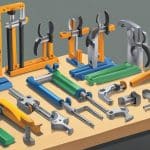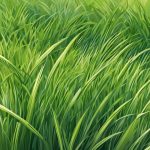Types Of Kitchen Knives
Kitchen knives are essential tools in every kitchen. They come in different shapes and sizes, each designed for a specific purpose. Understanding the different types of kitchen knives available, their uses, and how to maintain them is crucial for any home cook or professional chef.
There are two main categories of kitchen knives: essential and specialized. Essential kitchen knives are those that every cook should have in their kitchen, while specialized kitchen knives are designed for specific tasks. Essential kitchen knives include the chef’s knife, paring knife, serrated knife, and utility knife. Specialized kitchen knives include the bread knife, boning knife, and carving knife, among others. Knowing which knife to use for each task is important for efficient and safe cooking.
Key Takeaways
- Understanding the different types of kitchen knives and their uses is crucial for any home cook or professional chef.
- Essential kitchen knives include the chef’s knife, paring knife, serrated knife, and utility knife.
- Specialized kitchen knives are designed for specific tasks and include the bread knife, boning knife, and carving knife, among others.
Understanding Kitchen Knives

Kitchen knives are essential tools in any kitchen. They are used for chopping, slicing, dicing, and mincing a variety of ingredients. Understanding the different types of kitchen knives and their features can help you choose the best one for your cooking needs.
Blade Materials
The blade material is an important factor to consider when choosing a kitchen knife. The most common materials used for kitchen knife blades are carbon steel, stainless steel, and ceramic.
Carbon steel blades are known for their sharpness and durability. They are easy to sharpen and maintain, but they require regular oiling to prevent rusting. Stainless steel blades are rust-resistant and easy to maintain, but they are not as sharp as carbon steel blades. Ceramic blades are lightweight, sharp, and rust-resistant, but they are brittle and can chip or break easily.
Handle Types
The handle of a kitchen knife is another important factor to consider. The handle should be comfortable to grip and provide a secure hold. The most common handle materials are wood, plastic, and metal.
Wooden handles are traditional and provide a comfortable grip, but they require regular oiling to prevent cracking and warping. Plastic handles are durable and easy to clean, but they can become slippery when wet. Metal handles are sturdy and easy to clean, but they can be heavy and uncomfortable to grip for extended periods.
Knife Construction
The construction of a kitchen knife determines its balance and durability. The most common knife construction methods are full tang, partial tang, and rat-tail tang.
Full tang knives have a blade that extends through the entire handle and are the most durable and balanced. Partial tang knives have a blade that extends partially into the handle and are less durable and balanced than full tang knives. Rat-tail tang knives have a narrow blade that extends into the handle and are the least durable and balanced of the three construction methods.
In addition to the tang, the butt, rivets, and bolster are other construction features to consider. The butt is the end of the handle, the rivets hold the handle and blade together, and the bolster is the thick piece of metal between the blade and handle that provides balance and support.
By understanding the different blade materials, handle types, and knife construction methods, you can choose the best kitchen knife for your cooking needs.
Essential Types of Kitchen Knives
When it comes to cooking, having the right tools is essential. In the kitchen, one of the most important tools is a good set of knives. There are many different types of kitchen knives available, but some are more essential than others. In this section, we will discuss the most important types of kitchen knives that every home cook should have.
Chef’s Knife
The chef’s knife is the most important knife in any kitchen. This versatile knife is designed to handle a wide range of tasks, from chopping and slicing to mincing and dicing. A good chef’s knife should be comfortable to hold and have a sharp, sturdy blade. The blade should be between 8 and 10 inches long to provide enough leverage for chopping and slicing.
Paring Knife
A paring knife is a small, sharp knife that is perfect for peeling and trimming fruits and vegetables. This knife is also great for working with smaller items like garlic and shallots. A good paring knife should be comfortable to hold and have a sharp, pointed blade. The blade should be between 3 and 4 inches long for maximum control.
Bread Knife
A bread knife is a serrated knife that is designed to cut through crusty bread without crushing it. This knife is also great for slicing delicate items like tomatoes and cakes. A good bread knife should have a sharp, serrated blade that is between 8 and 10 inches long.
Utility Knife
A utility knife is a versatile knife that can be used for a wide range of tasks, from slicing meats and cheeses to trimming vegetables. This knife is smaller than a chef’s knife but larger than a paring knife, making it a great all-purpose knife. A good utility knife should be comfortable to hold and have a sharp, sturdy blade. The blade should be between 5 and 7 inches long for maximum versatility.
In summary, having a good set of essential kitchen knives is crucial for any home cook. The chef’s knife, paring knife, bread knife, and utility knife are the most important knives that every cook should have in their arsenal. By investing in high-quality knives and keeping them sharp, you can make cooking easier, faster, and more enjoyable.
Specialized Kitchen Knives
When it comes to specialized kitchen knives, there are a variety of options available that cater to specific needs. Here are some of the most commonly used specialized kitchen knives:
Santoku Knife
The Santoku knife is a Japanese-style knife that is versatile and perfect for a variety of cutting tasks. It features a shorter and wider blade than a traditional chef’s knife, which allows for a rocking motion while chopping. The blade is also thinner and lighter, making it easier to handle. The Santoku knife is ideal for slicing, dicing, and chopping vegetables, fruits, and boneless meats.
Boning Knife
A boning knife is a specialized kitchen knife that is designed for removing bones from meat, poultry, and fish. It features a long, thin, and flexible blade that allows for precision cutting around bones. The blade is also curved, which makes it easier to follow the contours of the meat. A boning knife is an essential tool for any home cook or professional chef who wants to prepare meat dishes with ease.
Fillet Knife
A fillet knife is another type of specialized kitchen knife that is used for filleting fish. It features a long, thin, and flexible blade that allows for precision cutting along the bone. The blade is also curved, which makes it easier to follow the contours of the fish. A fillet knife is an essential tool for any home cook or professional chef who wants to prepare fish dishes with ease.
Cleaver Knife
A meat cleaver is a large, heavy-duty knife that is used for cutting through bone and tough meat. It features a thick, rectangular blade that is perfect for chopping and splitting meat. The blade is also heavy, which makes it easier to apply force when cutting through tough meat. A meat cleaver is an essential tool for any home cook or professional chef who wants to prepare meat dishes with ease.
Nakiri Knife
The Nakiri knife is a Japanese-style knife that is designed for chopping vegetables. It features a straight blade that is perfect for making precise cuts on vegetables. The blade is also thinner and lighter than a traditional chef’s knife, which makes it easier to handle. The Nakiri knife is ideal for slicing, dicing, and chopping vegetables with ease.
Overall, specialized kitchen knives are essential tools for any home cook or professional chef who wants to prepare dishes with ease. Whether you’re looking for a knife to fillet fish, debone meat, or chop vegetables, there is a specialized kitchen knife that can meet your needs.
Knife Maintenance and Storage
Proper maintenance and storage of kitchen knives are essential for their longevity and optimal performance. Neglecting these aspects can lead to dullness, rust, and even damage to the blade. Here are some tips for maintaining and storing your kitchen knives.
Sharpening and Honing
Sharpening and honing are two different processes that help maintain the sharpness of a knife. Sharpening involves removing a small amount of metal from the blade to create a new edge, while honing involves realigning the existing edge. Honing should be done regularly, while sharpening should only be done when necessary.
To hone a knife, use a honing steel or a sharpening stone. Hold the steel or stone at a slight angle and run the blade across it several times on each side. This will help realign the edge and keep it sharp.
Cleaning and Care
Proper cleaning and care are essential for maintaining the quality of your kitchen knives. Always hand-wash your knives with warm, soapy water and dry them thoroughly before storing them. Avoid putting them in the dishwasher, as the high heat and harsh detergents can damage the blade and handle.
If your knife does get dirty or stained, use a mild abrasive cleaner and a soft sponge or cloth to gently scrub it clean. Never use steel wool or other harsh abrasives, as they can scratch the blade and damage the finish.
Storage Solutions
Proper storage is crucial for preventing damage to your knives and ensuring their longevity. Avoid storing them in a drawer or other container where they can rub against other objects and become dull or damaged. Instead, use a knife block, magnetic strip, or sheath to keep them safe and secure.
A knife block is a great option for those who have ample counter space, while a magnetic strip can be mounted on the wall to save space. A sheath is a good choice for those who need to transport their knives or store them in a drawer.
By following these tips for maintenance and storage, you can ensure that your kitchen knives stay sharp, clean, and in good condition for years to come.
Selecting Kitchen Knives
Selecting the right kitchen knives can be a daunting task, especially for home cooks who are not familiar with the different types of knives available. However, with a little bit of knowledge and research, anyone can find the perfect set of knives for their cooking needs.
By Cooking Needs
When selecting kitchen knives, it is important to consider your cooking needs. Different knives are designed for different tasks, and having the right knife for the job can make all the difference. For example, a chef’s knife is a versatile knife that can be used for a variety of tasks, such as chopping, slicing, and dicing. On the other hand, a paring knife is designed for more delicate tasks, such as peeling and trimming.
By Budget
Another important factor to consider when selecting kitchen knives is your budget. While it is true that high-quality knives can be expensive, there are also many affordable options available. It is important to remember that investing in a good set of knives can save you money in the long run, as they will last longer and perform better than cheaper alternatives.
By Brand
When it comes to selecting kitchen knives, there are many brands to choose from. Some of the most popular brands include Zwilling, Wusthof, and Shun. While it is important to consider the reputation and quality of the brand, it is also important to remember that personal preference plays a big role in selecting the right knives.
In summary, selecting the right kitchen knives can greatly improve your cooking experience. By considering your cooking needs, budget, and brand preferences, you can find the perfect set of knives for your home chef needs.






